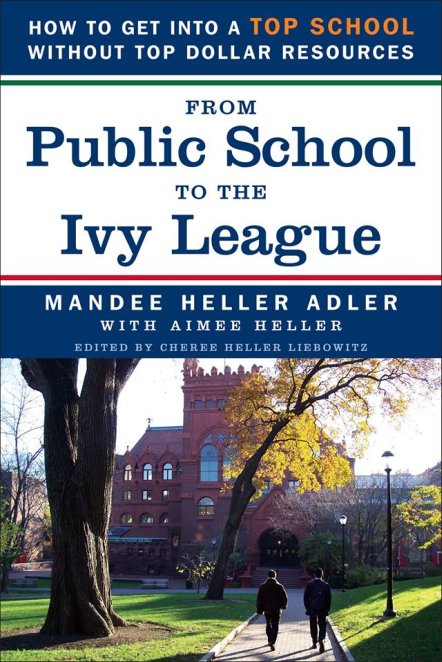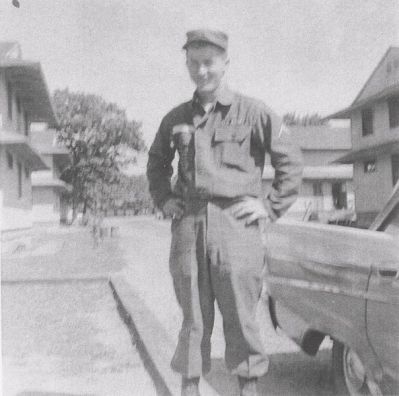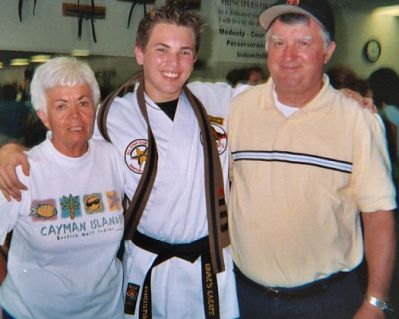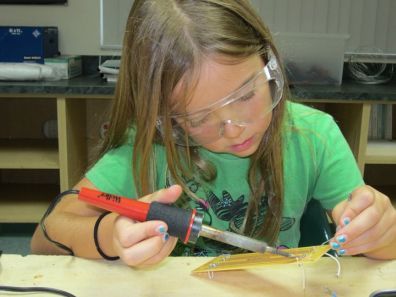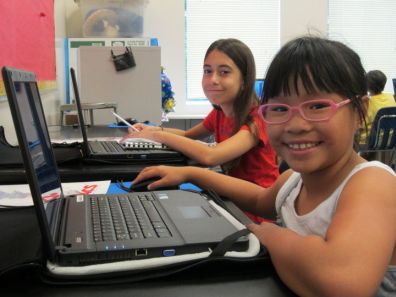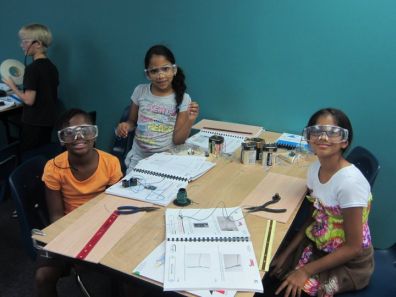
It’s graduation time! The summer ritual of getting kids ready to send to college is around the corner. Mini-fridge, check. Shower caddy, check. Good study habits, hmmm. Surprisingly, developing good study habits before entering college is something that many talented children and their parents overlook. It’s easy to understand how this oversight happens when you realize that bright students often don’t need to study. That’s because their schoolwork isn’t challenging and requires minimal effort to receive high grades. Kids who are used to coasting like this hit reality in a big and stressful way when they encounter the rigor and higher expectations of college. But it doesn’t have to be like this. Helping your child build good study habits well before college is essential to their long-term success and happiness. You don’t develop your slice backhand by hitting tennis balls that are tossed straight at you. Likewise, you don’t develop strong study skills by “learning” easy material! It’s also important to let your child know that the effort he or she puts into intellectual pursuits, not just the outcome, matters to you. Failure should not only be an option but an understandable expectation when aiming high. As Thomas Edison said, “I have not failed. I’ve just found 10,000 ways that won’t work.” By encouraging a positive mindset and providing your child with challenging opportunities designed to stretch the talented mind, you’re well on your way to checking off the box for good study habits and many other skills that your child will need before, during and after college.
The following excerpt is from the new book by Mandee Heller Adler, From Public School to the Ivy League: How to get into a top school without top dollar resources, which is available at Amazon.com. Ms. Adler is the founder and principal of International College Counselors, a Florida-based firm that provides expert strategies for admission to undergraduate colleges, graduate programs, business schools, law schools, medical schools, dental schools and other postgraduate schools.
From Chapter 4: Writing Essays …
ANSWERING THE QUIRKY QUESTIONS
In recent years, a number of colleges have been adding quirky questions to their applications. These supplemental questions are considered a way to get students to stand out from the crowd.
These questions have included:
- Imagine you have to wear a costume for a year of your life. What would you pick and why?
- What is your favorite ride at the amusement park? How does this reflect your approach to life?
- What does Play-Doh have to do with Plato?
- What would you do with a free afternoon tomorrow?
- What was your favorite thing about last Tuesday?
- The Spanish poet Antonio Machado wrote, “Between living and dreaming there is a third thing. Guess it.” Give us your guess.
- According to Henry David Thoreau, “One is not born into the world to do everything, but to do something.” What is your something?
What colleges are looking for is your voice. Use this as an opportunity to demonstrate your “out-of-the-box” thinking. However, don’t go overboard. Admissions officers are looking to see if you’ll be an interesting person to have on campus. Interesting means imaginative, not crazy and not dangerous sounding.
GREAT FIRST SENTENCES
You need a great hook and a great first sentence. Opening sentences have the power to compel and fascinate. Some of our favorite student first sentences include:
- For eight years, I have celebrated polyester.
- I vividly recall coming home from school one day in Buenos Aires, Argentina, to find my house in disarray and my parents packing one suitcase after another.
- I’ll admit it: I have a thing for gavels—a thing for motions and seconds and the clarity that they bring to meetings.
- I eagerly reached into my Hello Kitty backpack.
- Max prances in place as we await our turn into the arena.
- Drip. Drip. Drip. Tick. Tick. Tick. As I lie in the hospital, waiting to be taken into surgery, I can only think that my IV drip sounds just like a metronome.
You want to read more, right?
FATAL ESSAY ERRORS
Application essays have been requested as part of the college application for the past umpteen years. The admissions teams have seen a lot of “creativity.” Here are their least favorite types of essays:
- Metaphor. Don’t compare yourself to a mango, a Ferris wheel, or any other objects.
- Death. Don’t write about a person or pet’s death unless it truly affected your life and you can use it to exemplify growth—for example, if someone died of cancer and you made it your mission to raise money/awareness, or if a death during high school affected your grades and caused you to stumble, but then you regrouped to overcome.
- Free verse essays, essays written as raps, limericks, etc. Don’t emphasize form over function.
- “Meta” essays where you talk about writing an essay, about the process of writing an essay, or about essays themselves.
Additionally, you should avoid writing about the topics below unless you have something extraordinary to say:
- A trip to Europe
- Generic admiration for your mom or dad
- The controversial rock star or movie star whom you idolize
- Overcoming an injury and making an athletic comeback
- Volunteering at a local community center
- Building homes in Costa Rica with Habit for Humanity
- Understanding the meaning of life from a fishing trip
Sorry, but thousands of students have beaten you to these topics and then beaten them to death. These are called “cliché essays” because the reader knows from the get-go just where you are going with it.
THE VIDEO COLLEGE ESSAY
A number of college admissions departments are formally accepting video college essays.
The first step for any student is to view recent videos and see what others have done. This will give you an idea of the range of possibilities.
When it comes to actually making your video, it’s important to be original but in a way that is comfortable for you. Do what works for you. Your main goal needs to be communicating your message.
- Start by identifying the question and any directions.
- Think about what you want to say.
- Write a script that is clear on the message and ideas you want to get across.
- Collect resources and props that you want to use in the video.
- Record the video until it’s as perfect as possible. Some students record the video themselves using a tripod while speaking directly into the camera; others enlist the services of a friend or family member.
- Review your video and collect feedback.
- Edit, edit, edit, and re-record if necessary.
- Get more feedback.
- Edit and re-record until it’s as perfect as it can be. Make sure it fits the requested length and meets all specs before sending it in.
To get a head start on preparing for college admissions, order a copy of From Public School to the Ivy League: How to get into a top school without top dollar resources from Amazon.com.
A recent study found that number sense in infants is a predictor of how well they later learn the symbolic math typically taught in school. Researchers observed how long 6-month-old infants looked at a screen with a changing number of dots compared with how long they looked at a screen with a constant number of dots in changing patterns. (See video above.) Three years later, these children were given an IQ test and several types of math tests. The infants who looked longer at the screen with a changing number of dots, which is indicative of stronger number sense, subsequently scored higher on the math tests, regardless of IQ. So what is "number sense," and does this mean that parents should start packing dotted flash cards in the diaper bag?
What is Number Sense?
There are different definitions of number sense, but they generally agree on a few basic factors:
• Number sense is intuitive. In other words it is not arrived at through conscious reasoning.
• Number sense includes an understanding of magnitude of amounts, relationships between amounts, and how amounts change through natural actions.
Examples of number sense in an infant might include observing and understanding the following: There are a lot of stars on my blanket. Daddy has more food on his plate than Mommy. I have a bunch of blocks on my high chair table. If I knock some off, I have fewer blocks. From what current science tells us, pre-verbal infants cannot actually have these words running through their heads. Nonetheless, a primitive understanding is there as humans seem to be born with an innate ability to perceive quantity before they can speak about it and well before they can write about it.
Nurturing Number Sense
So should you start showing your baby flash cards with dots? No. While the study’s authors hope that their findings will lead to improved strategies for math education, they are careful to caution that "[O]ur infant task only explains a small percentage of the variance in young children’s math performance. But our findings suggest that there is cognitive overlap between primitive number sense and symbolic math. These are fundamental building blocks."
Still, we know that there are benefits to talking to your baby as an essential part of the early learning process. It’s not unusual to hear a mother carrying on a one-sided conversation in which she emphasizes the phonetic sounds in the names of everyday objects. For example, "This is a banana. Buh buh banana." The baby eventually catches on that the "buh" sound is associated with a banana, and that Mom’s lips do this strange "roll in-then-pop out" motion when she makes this sound. This happens before the baby ever learns to say "banana" or that there is this symbol we call the letter "b" that represents this sound. When the letter "b" is finally introduced, children can connect it back to the "buh" sound and objects such as a banana to which they were introduced in infancy.
But how frequently do you notice a parent holding up two different bananas and talk about which one is bigger, or which one has more brown dots? Or what happens to a bunch of bananas when you pull one off? Or when you cut that banana into pieces? The study’s lead author indicates that "We believe that when children learn the meaning of number words and symbols, they’re likely mapping those meanings onto pre-verbal representations of number that they already have in infancy." If she is correct then adding number sense talk to those parent-baby conversations makes, well, sense!
Developing good study habits before entering college is an essential skill that many gifted and talented children and their parents overlook. Some parents are often surprised to learn that their bright child can ace a schedule of honors or Advanced Placement courses with little studying. They might assume that if their child is receiving top grades in the most advanced classes offered by their school, he will be well-prepared to handle the rigors of university courses. This is an unlikely outcome without good study habits, and waiting until college to learn how to study is much too late when one might already be dealing with living on one’s own for the first time. Here are three tips to help foster this important skill while you still can.
Find a Challenge That Requires Studying
If a talented child attends school in a structured setting, chances are she is already being asked throughout the school day to cover material she already knows or can learn quickly. To ask her to take time at home to study the same material is to double her frustration. You’ll have greater success instilling good habits if you ask your child to study material that actually challenges her.
The experience may take some getting used to by both child and parent because, if done correctly, it will involve:
• A healthy struggle to understand new ideas,
• Getting less than perfect scores,
• Not always being the smartest kid in the room, and
• (Drum roll, please) having to study to do well.
Sometimes subject or grade acceleration can help, but parents should keep in mind that even with acceleration, a gifted child is still being asked to learn material that was designed for the way a typical student’s brain works. A better alternative to getting through standard curricula faster is to find an alternative that will encourage your child to understand subjects more deeply by addressing the “Why?” questions bright children are so naturally inclined to ponder.
Encourage a Growth Mindset
Stanford psychologist, Carol Dweck, is noted for her ground-breaking research on praise and motivation. She found that children who believed that a person’s intelligence was fixed tended to believe that truly smart people don’t need effort in order to succeed. By contrast, those who believed intelligence could be developed were much more likely to credit hard work as a key factor in achievement. (Going back to our previous point, Dweck also found that children who were praised for their intelligence instead of their effort were more likely to avoid challenges for fear of failing and losing praise.)
Dweck’s later research showed that children can be taught this growth mindset when educated on how the brain gets stronger and smarter through the process of learning. In this later study, students who were taught about brain development in addition to study skills outperformed those who were taught only study skills. The latter group was not motivated to put those skills to use. So parents, make sure your child understands the positive impact he can have on his brain and save your praise for the effort he puts into learning and studying.
Turn the Tables and Have Your Child Quiz You
One way to make studying more fun and give your brain cells a workout at the same time is to have your child test you. Turn the tables by being a student again with your child as the teacher. Have her create, administer and grade an exam that you take. Bright children often enjoy discussing and sharing their knowledge and may be more than happy to “show you up.”
In the process of creating the questions, your child reinforces in her own mind the concepts on which she will be tested. When grading, your child must go through the analytical exercise of determining whether your answers are correct and why incorrect answers are wrong. Even if you know the material well, be sure to throw in some wrong answers and ask for explanations of the right answers.
There is no simple solution for helping a gifted child develop the study habits he will need in the complex world of university life. However, should he find himself facing true intellectual challenges for the first time without this basic learning tool, he may be at a distinct disadvantage relative to his classmates, regardless of the natural ability that used to take him so far. Like most good habits, studying is one best formed at a younger age when behavior and attitude are more malleable.
It’s the middle of September, so your school-aged kids are likely back in the rhythm of classes, extracurricular activities, homework, and maybe even part-time jobs. Busy schedules are taking shape, and the effort to fit everything in will likely mean some trade-offs. To the extent that your kids still look to you for help with their homework, take this moment to remember (or learn) this: Letting your children struggle at first will lead to better outcomes than if you simply provide the answer in the name of expediency.
In a study published earlier this year, education researchers compared the performance of math students in two groups. One group was given direct instruction when learning a new concept. In other words, they were told at the start how to solve a new type of problem. The second group was given the problem and asked to come up with as many approaches to solving it as they could before receiving any formal instruction. In several comparisons, researchers found that both approaches were effective at imparting basic knowledge of the new concept. However, students in the second group formed a much deeper conceptual understanding and were better able to transfer their knowledge to different situations.
This was the case even though the second group usually failed to come up with a completely correct solution. Researchers call this approach “productive failure.” Their study also showed that a higher number of incorrect solutions correlated to increased learning when those students were finally given instruction on the topic. The more we struggle to figure something out, the better we understand it when we finally do understand it. Why is that?
The theory behind the difference in performance has to do with the learning process. It seems that when we try to solve a new type of problem without new information, our brains have to lean on what we already know. When we are finally presented with correct approach, our brains make connections between the existing knowledge that was called up and the new knowledge. This seems to be a fundamental part of successful long-term learning.
Here’s the sad part for American students and where you, as parents, can try to help your kids. Math education in the US typically follows the direct instruction model. By contrast, consider how students in countries that outperform the US in math learn a new mathematical concept. The section of the video below that starts at about the 1:43 mark discusses the TIMSS 1999 Video Study of eighth-grade mathematics and science teaching in seven countries. Consistent with the “productive failure” study, the TIMSSS videos showed that teachers in countries that outperform the US allow their students to struggle with new math concepts first.
In the best case, your child’s teacher already uses the “productive failure” approach. Keep up the good work at home when it comes to homework help. If the teacher uses direct instruction, then try encouraging your child to think of various ways of approaching the problem before attempting to explain the teacher’s way. Many of us at IMACS are parents too, so we know this is easier said than done with the busy lives that kids and parents lead today. In the long run though, it’s well worth the effort.
Unless you’ve been hiding under a rock for the past year, you’ll have noticed that the campaign to teach kids (and adults) how to code is everywhere you turn. As parents, politicians, and educators debate how to produce more graduates in technology fields, the push to introduce computing at an earlier age gets stronger. For example, MIT’s Lifelong Kindergarten group is collaborating on programming software aimed at kids in preschool to second grade. There are even board books for babies on HTML and CSS! We suspect that such novelties are more for tech parents’ enjoyment.
IMACS believes these efforts are well-intentioned and some, when implemented, will be well-designed. But before you click over to Amazon to buy your little drool monster a book on Web design, IMACS can offer you a few examples of how to introduce computational thinking to children through easy activities that are familiar to you, even if you think you’re computationally challenged.
Computational Thinking vs. Coding
This short and informative paper by Jeannette Wing, head of the Computer Science Department at Carnegie Mellon University, explains clearly what computational thinking is and is not. The following excerpted quote is a good summary of the focus of this blog post:
Learning to think abstractly is an essential skill if you want to succeed in computer science. It makes solving problems easier, which in turn makes working on those problems more fun. Notably, students can learn to think like a computer scientist without entering a single line of code into a computer. In fact, our experience in teaching CS is that writing computer programs is trivial for students who first develop computational thinking skills. Let’s see where in our daily lives we can show kids relatable examples to help them make the transition to abstract thinking.
Stacks and Queues
In computing, a stack is an object in which data expressions are stored and retrieved in such a way that the first data expression to be stored is always the last data expression to be retrieved. It is an example of a so-called Last-In-First-Out (LIFO) object. The same idea applies to various real-life constructs that young kids encounter, even babies who love board books.
Obviously, you can’t explain LIFO with words to a baby and expect the baby to understand, but you can certainly demonstrate the concept with your actions. Take the classic Fisher-Price Rock-a-Stack, for example. Start with the rings off the cone and then load them on in the intended manner with the blue ring going on first. Try to get just the blue ring off. Can you do it while the other rings are still on the cone? No, you have to take the rings off one by one with the blue ring coming off last.
Older kids can appreciate the same concept with examples they come across in their lives: unloading plates from the dishwasher into the cupboard, setting the table with said plates the next day, selecting a product such as cosmetics from a store shelf, putting said product back if you decide not to buy it. You get the picture.
A queue is similar to a stack in that it is an object used to store data expressions. In the case of a queue, however, the first data expression to be stored is always the first to be retrieved. Queues are examples of First-In-First-Out (FIFO) objects. Kids encounter them every time they go through a checkout line or a drive-thru. Switch that Rock-a-Stack cone for an empty paper towel roll, and you’ve got yourself a baby-friendly queue.
Sorting Algorithms
Sorting is one of the oldest problems in computer science. Although the end goal (an ordered list) is conceptually easy to understand, getting there can be complex. Add to that the need for sorting algorithms to be computationally efficient and you’ve got yourself an interesting abstract puzzle.
If your kids are old enough to know or learn how to put words in alphabetical order, then make a project out of sorting the books on their bookshelf. Decide on a sorting key such as title or author’s name. For this example, we’ll use title. For the first shelf, ask your child to try a simple bubble sort. Traverse the shelf from left to right, compare the titles of two books, and swap them if they are in the wrong order. Repeat this process until all books on this shelf are in the correct order.
For the next shelf, you can use a simple insertion sort. Take all the books off that shelf and put them in order one by one in a pile on the floor. Each time that you add a book to the ordered pile, be sure to put it in the right place relative to the books that were previously added.
Now that you have two properly sorted sets of books, you and your child can work together to sort all books. Sounds like a good time to use a merge sort. Move the sorted books off the first shelf into another pile on the floor while keeping them properly ordered and separate from the pile of books from the second shelf. Reshelve the books as follows: repeatedly compare the titles of the two books that are atop the two piles, selecting the one that goes first, and continuing until both piles are exhausted.
Object Oriented Programming
An “object” in computer programming is a complex structure containing data fields and instructions. These objects interact with each other to create even more complex computer programs. The beauty of object oriented programming is that you can reuse objects to do common computing tasks without having to reinvent them each time. Over time, programmers can build up a “library” of useful objects.
The following analogy certainly isn’t perfect, but it will help get the point across about these seemingly mysterious objects. If you’re planning an outing with kids, you’ll need a few things to help keep your sanity: nourishment, entertainment, and possibly a change of clothes. So grab three bags and make some objects! In the nourishment object, you’ll probably need fruits, carb snacks, a protein, and beverages. For the entertainment object, how about art supplies, books, sporting equipment, and portable gaming device? Kids are made to get dirty, and the weather may change, so pack a top, bottom, and outerwear in the clothing object. Throw those “objects” in your huge tote “library” and you’re ready to go!
Think Like a Computer Scientist
Planting the seeds of computational thinking, especially the ability to think abstractly, is really a matter of recognizing the examples in your life that can be used to foster discussion with your children. Like any new endeavor, remembering to look at events in a computational light takes practice. You might just find yourself thinking like a computer scientist when it comes to solving the data problems in your own adult life.
Enhance your computational thinking skills with online computer science courses from IMACS! Register for our free aptitude test. Solve weekly IMACS logic puzzles on Facebook.
Milo Gardner may be retired, but he’s not letting his mind rest idle. This amateur code breaker chatted with IMACS about his mathematics background and how it influenced his life. After serving in the United States Army as a cryptanalyst, Milo went on to earn his B.A. in Mathematics with a minor in History of Economic Thought at California State University – Chico. What followed was a career in aerospace engineering and an M.B.A. from CSU – Fullerton. Years later in retirement, Milo’s curious mind, a letter to the editor, and a meeting at a coffee shop led him to his current passion – decoding ancient Egyptian math texts. IMACS blog readers can review his extensive list of online publications on the subject. Now let’s hear from Milo in his own words.
Please tell us about your mathematics background, including what interested you as a child.
Baseball and sports of all types filled my youth. In the 8th grade I was sports editor of our school newspaper. This meant computing box scores and other game statistics for the various teams and writing up short narratives. Several sports teams were enjoyed during high school. Basketball was my favorite. Math was a special high school interest, as well as Spanish, chess and the sciences. Algebra I, Algebra II, Geometry and Trigonometry were studied in the context of set theory. That is, math students determined in advance which number system(s) would solve particular problems.
Right out of high school, the US Army was joined with hopes of spending time in Europe. My high school language skills were tested first. Two entrance exams for the Defense Language Institute at Presidio of Monterey, California, were taken. Luckily, the second exam score was low. The Army’s code-breaking tests followed, which were passed. In a five-month code breaking school, language and number-based patterns were studied. Techniques identified one-to-one, two-for-one, and other substitution systems. Finishing third in a class of 20, Germany was selected as my two-year assignment. Lower ranked students were sent to Africa, Turkey, Korea and Japan. In Germany, ad hoc Russian language projects were assigned to cryptanalyst and linguist teams. A two-month side trip to Lebanon widened my foreign language exposure to include Arabic.
Upon discharge from the Army, a number of my co-workers went to work for the National Security Agency (NSA) in Washington, D.C. I went to college in Northern California and earned a Mathematics degree with a minor in History of Economic Thought, with an intention of applying to the NSA. Computer programming courses were taken, as I was preparing to be a high school math teacher as a back-up career. Upon graduation, wishing to be married and raise a family, a southern California aerospace engineer accepted. The pay was better than teaching. Equally important the location kept me and my wife-to-be close to both of our families.
What kind of work did you do in the aerospace industry?
The first aerospace position was at Vandenberg AFB as a systems analyst. Western missile test range issues input computer-generated data to hand drafted range safety charts. The charts factored in daily wind measurements and drag aspects of missile parts that allowed three-second delays for the missile safety officer to blow up errant missiles. Nearby populations were protected. Subsequently, college programming skills were applied working with a team that automated the hand drafted charts.
The second aerospace job was at Rockwell International in Fullerton, California. Failure patterns of Minuteman I, II and other avionics guidance systems were studied in terms of maintainability issues. While at Rockwell, evening business classes were taken towards an MBA degree. Upon graduation, a career change allowed our family move to northern California to be near our respective families.
You raised a daughter who went on to become a civil engineer. What advice can you offer to parents of mathematically talented girls on how to nurture their talent?
Missy, my CE daughter, was self motivated by the second grade. All three of my children played musical instruments. Parental guidance consisted of coaching youth softball and baseball teams up to age 12 and supporting each child’s active social life. Thereafter, tryouts for competitive teams were arranged. Missy made a traveling team at age 14 in an organization that her older sister played. My wife and I attended most of Missy and her sister’s weekend tournaments. Our children knew their parents were their biggest supporters.
Missy was strong willed and stood up to basketball, softball and volleyball coaches in high school. Her sports experience gave her confidence to confront one engineering professor in college who refused to call on women in the class. After receiving a failing grade at mid-term, she called a conference with the professor and asked why he had not taken even a single question from one woman in the class. Her strong position was understood and respected. Thereafter, in-class questions were answered sufficiently for her and other women to earn passing grades. Today, she is an engineer working for a private firm. Incidentally, she told us this story weeks after the situation had occurred. Missy had the confidence to handle it herself.
In retirement, you now pursue code breaking as a hobby with a specialization in ancient Egyptian math texts. How did you become involved in these pursuits?
In 1962, an upper division college history of math class told a fuzzy history of zero story. Zero, as we know it today, did not reach Germany until 1200 AD, in time for the birth of our base 10 decimal system in 1585 AD (that defined n^0 = 1), an unbelievable assertion. “Some day I’ll research that topic,” I told myself. In 1988, six months were spent studying the topic at two local university libraries. Medieval and older Near East numeration systems including Classical Greeks used zero, a round figure topped by two dots in clear ways. Babylonians and Egyptians used zero as a limit 1,500-2,000 years earlier. Zero was also the value of empty sets in an Egyptian double entry accounting system. The older uses of zero did not use placeholders. Care had to be taken to read the context of mathematical documents and inventories –- issues that I knew well as a military code breaker.
After completing the study of the longer history of zero, an unexpected event took place. Acting on the dehumanization of classroom math topics (e.g., omitting personal stories like how the pre-teen Gauss summed the addition of 1 to 100 by a formula), I wrote a letter to the editor of the Sacramento Bee on the weaknesses of the 1990 California Math Framework. The day after the letter was published a phone call from a retired electrical engineer was received. Noel Braymer asked that we meet at local coffee shop. I said yes, and my retirement world changed for the better.
Noel had worked on 1650 BCE Egyptian text called the Rhind Mathematical Papyrus (RMP) for 15 years. A 50 member RMP 2/n table was encoded. The table took up 1/3 of a papyrus that contained 87 other problems. Noel offered a modern number theory solution to the 2/n table. Number theory stresses prime numbers in ways that ancient and modern mathematicians parse divisors of composite numbers into primes. The ancient 2/7 was recorded as 1/4 + 1/28. What set of ancient rules were used in the entire 2/n table?
The 2/n table encoded 2/3, 2/5, …, 2/101 to concise unit fraction series in ways that scholars hotly debated during the 20th century. Robin-Shute published the Rhind Mathematical Papyrus text in 1987 and suggested one incomplete solution. Noel gifted the book to me, and asked if I would assist in publishing his work. I said yes, provided the ancient scribal methods were also decoded and published.
Ten years later, working with a linguist, a sister document to the RMP, the Egyptian Mathematical Leather Roll (EMLR), was decoded with modern number theory. Attempting to explain connections between the two documents, aspects of the RMP 2/n table construction methods slowly emerged. Another seven years passed. Finally, by considering Egyptian wages paid in commodities, a 2011 paper included a complete solution to the 2/n table problem as an appendix.
In your opinion, what mix of interests and skills makes a person well suited for a career in cryptography? What should kids who are interested in code breaking be doing now to prepare themselves for a career in this field?
Students should enjoy solving all types of puzzles. I have loved crossword and other puzzles since high school. Learn a foreign language and learn about new and old foreign mathematical issues. Enjoy competitive individual and team games. Chess and bowling took up much of my free time. Choose your games and puzzles wisely. To pursue a puzzle solving career, a student should learn to contribute to all sorts of teams. Team membership is an important skill in many aspects of the adult world.
The benefits of math competitions are well known: focusing on goals, dealing with pressure, learning teamwork, and building friendships are among those typically mentioned. Math competitions also allow for the much needed celebration of intellectual achievement the way athletic achievement has always been celebrated. At IMACS, many of our math enrichment students enjoy competing in the American Mathematics Competitions, International Mathematical Olympiad, and MATHCOUNTS among other contests, so we have a very positive view of math competitions, particularly for the kids who thrive in that environment. We’re extremely proud of our numerous students over the years who have performed well in these prestigious contests. We’re equally proud of our numerous students over the years who have thrived in quiet contemplation.
This brings to mind an article published last week by The Wall Street Journal on the challenges encountered by Type A parents raising Type B kids. The article talked about different ways that ambitious, competitive, and hard-driving parents modify their interactions with or expectations of their dreamy, mellow, and seemingly laid-back children to foster healthy parent-child relationships. Whether Type A or not, most parents are cognizant of today’s ultra-competitive global environment, and many feel a sense of urgency to nudge, push, or even pressure their kids to achieve. It’s not a stretch to imagine the parents of a mathematically talented child thinking, “If all the other kids are involved in math and science, then my child should be doing even more.” Here’s the thing: What makes an activity suitable for even more depends on what works for your child and is not necessarily the same activity enjoyed by all the other kids but with more time dedicated to it or with better results.
For parents considering activities for their mathematically talented child, it is important to understand how innate personality factors into the mix that determines whether math contests provide a net positive experience for that child. Just as there are natural-born competitors among mathematically talented students, there are also natural-born dreamers. These kids used to get a bad rap for being unfocused, undisciplined, and even lazy. There was no observable productivity associated with daydreaming so, of course, it had to be a waste of time. Not so fast. In 2009, researchers from the University of British Columbia published a study in the Proceedings of the National Academy of Sciences detailing that brain activity increases when our minds wander. Reporting on this finding, ScienceDaily.com put it well: “[B]rain areas associated with complex problem-solving – previously thought to go dormant when we daydream – are in fact highly active during these episodes.” And from The Wall Street Journal: “These sudden insights … are the culmination of an intense and complex series of brain states that require more neural resources than methodical reasoning.”
If your child is more of a dreamer (or just not drawn to competition), activities that would cultivate his or her talent in and appreciation for mathematics may differ from what is offered through a typical regional, national, or international math contest. Students of this personality type often find more success and satisfaction with math enrichment programs that focus on deep problem-solving over computational prowess. This is not to say that your child shouldn’t at least try participating in some type of competitive math. The experience just might open up a different side of his or her mathematical personality. In fact, our math enrichment classes use game-playing and mini-competitions as teaching tools, and most of our students really enjoy this aspect of the class the best. But if it’s clear that competition does not bring out the best in your child, we encourage you to explore other options including letting your child have more free and unstructured time to let his or her mind ruminate about the wonders of mathematics.
For parents of talented children, the secrets of mathematical success are really not that different from general advice on positive parenting. They include understanding what kind of child you have, knowing what motivates him or her, and fostering an environment that includes the kind of math activities or, quite possibly, freedom from structured activities that align best with that motivation. And if having a dreamer for a child still makes you worry, just think about the great mathematical and scientific discoveries we owe to dreamers of the past. You never know what grand ideas are simmering behind those eyes staring off into the distance.
Dreamer Matching Puzzle
We made a simple matching game out of the Wall Street Journal article that reported on the aforementioned University of British Columbia study. See if you or your kids can match the great thinker with his profound idea and what he was reportedly doing at the time moment of insight. Answers may be found in the article.
Great Thinker: (A) Archimedes, (B) Newton, (C) Einstein, (D) Descartes, and (E) Tesla.
Profound Idea: (1) special relativity, (2) coordinate geometry, (3) alternating electrical currents, (4) calculating the volume of an irregularly shaped object, and (5) law of universal gravitation.
Dreamy Activity: (i) lying in bed watching flies on the ceiling, (ii) taking a bath, (iii) watching an apple fall from a tree in an orchard, (iv) taking a walk, and (v) imagining trains and lightening.
Editor’s note: Regular readers of this blog will notice a slight change going forward. IMACS will be switching to a bi-weekly publishing schedule with our next post appearing on November 10, 2011.
“Indeed, your conception of failure might not be too far from the average person’s idea of success, so high have you already flown.”
– JK Rowling, Harvard commencement speech, June 2008
“People who have an easy time of things, who get 800s on their SAT’s, I worry that those people get feedback that everything they’re doing is great. And I think as a result, we are actually setting them up for long-term failure.”
– Dominic Randolph, Headmaster, Riverdale Country School, New York Times Magazine, September 14, 2011
Two weeks ago, the science world was abuzz with talk of a report that neutrinos seemed to have traveled faster than light. News of this finding traveled pretty quickly as well, as media outfits worldwide ran headlines that (gasp!) Einstein may have been wrong. News like this would have been dismissed summarily were it not for the fact that the research team involved in this experiment are not exactly a bunch of weekend armchair physicists. They are part of the OPERA Collaboration working at CERN.
So why would these esteemed scientists put themselves out there to be met by the inevitable wave of skepticism, even ridicule? Because they understand that if they made an error, opening their research to scrutiny in order to find and correct the mistake is exactly what will help them advance their work and the work of others. In fact, the official press release announcing these unexpected observations quotes CERN Research Director Sergio Bertolucci as saying, “When an experiment finds an apparently unbelievable result and can find no artefact [sic] of the measurement to account for it, it’s normal procedure to invite broader scrutiny, and this is exactly what the OPERA collaboration is doing, it’s good scientific practice.”
At IMACS, we couldn’t agree more, and would further assert that the same principle applies in mathematics and computer science. Learning to fail well in these subjects is particularly important because of their exacting and objective nature. Your proof is logically consistent or it isn’t. Your computer program compiles or it doesn’t. There is generally no interpretive latitude around whether you’re right or wrong. There is no arguing that the instructor’s subjective judgment based on his or her personal ideology caused your poor grade. Add to that the tendency of talented students to have a strong aversion to failure and you can see that how resilient one is in the face of failure will be a major factor in determining how much success one has going forward.
While we’re not experts in educational psychology at IMACS, we’ve taught thousands of talented children over the years and are parents ourselves, and what we observe is that learning to fail well is a “scaffolding” process. A talented child who is allowed to have small failures early on without harsh consequences and who is involved meaningfully in determining and executing corrective action shows greater resiliency when faced with the next level of failure. This process builds on itself as the child grows older and the circumstances and consequences become more serious. The failures may grow, but so does the child’s ability and confidence to handle them effectively and independently.
So parental readers, take a look at your mathematically or scientifically talented, award-winning, perfect-scoring children and ask yourself, at this age when the consequences of failure are not so great, are they developing the resiliency that will allow them to take the intellectual risks that are necessary for great success but may also lead to major failure? Do they know from experience, not from having you tell them, that they have it in themselves to bounce back? Ask of yourself, do I allow my child to feel safe about having small failures now so that he or she can rise up from a bigger failure later when I’m not always going to be there to pick up the pieces? If not, then perhaps it is time to lead by example and show that you can make adjustments with an eye toward the long term. After all, if your child is someday going to make the next groundbreaking discovery in physics, he or she should get a head start by learning to fail well now.
Have you heard a story like this before: My daughter used to enjoy math and science when she was in elementary school. She’s always been strong in those subjects. But now that she’s going into 7th grade, it’s no longer “cool.” She’s actually afraid that her classmates won’t like her anymore if they find out how talented she is. Her computer science teacher called to tell me that she doesn’t want to take the honors programming class next year, even though she was the top student in his class last year. How do I make her understand that she should pursue her natural talents regardless of what her so-called friends think?
There is no easy or single answer to this difficult parenting problem. The factors that motivate a child are often as unique as that child. But in our experience at IMACS, one factor seems to be pretty consistent across the board: In this age range, parental influence starts to wane, sometimes rapidly, and outside parties such as friends and teachers gain in influential power. If you don’t have buy-in from a tween or teenager on a particular idea that involves her, then you’re probably not going to get anywhere. In fact, there’s a good chance that the reaction you get is the exact opposite of the one you want. Such is the process of growing up. It just seems more painful to now find yourself on the parental side of this equation.
There are two broad pieces of advice that we can offer based on the anecdotal evidence we see and hear with our female students. One is to get your daughter involved in one of the growing number of programs that promote science, technology, engineering and math (STEM). The earlier you get girls excited about STEM, the better. Studies have shown that if girls are not interested by middle school, it’s almost impossible to get them to pursue any of these fields in college or as a career. Getting your daughter involved in math and science enrichment during elementary school is a great first step. Whatever the age, look for a program with a healthy proportion of female participants, or even a girls-only program if available in your area. When a girl is surrounded by other girls who are also interested in these subjects, then being a “math and science girl” doesn’t seem so “out there,” and the stereotype that STEM is for boys is less likely to be reinforced. Your daughter might also feel more confident and willing to take more risks in learning if she’s not surrounded by boys.
The other piece of advice is to find a trusted adult female who works in a STEM field to mentor your daughter. It’s important for girls to have STEM-minded peers, but they also need successful female role models to look to and learn from. We mean no disrespect to the many excellent male mentors out there, but there is no doubting the power of “seeing is believing” when it comes to convincing girls that they can have a successful future in STEM. And while it’s inspiring to read interviews with Google’s Marissa Mayer or actress Danica McKellar, building a positive one-to-one mentoring relationship with an accessible adult has much more impact. Your daughter can receive regular guidance that address the specifics of her situation (e.g., career options, scholarship applications, college admissions). Plus, it will be coming from an adult other than Mom or Dad who, at this stage of adolescence, have zero credibility.
Below, we’ve compiled a non-exhaustive list of organizations, programs and resources for encouraging and motivating talented young girls to get and stay engaged with STEM. Many have organized mentor matching services. If your daughter is approaching high school, we’ve also included two organizations that focus exclusively on high school girls. We encourage you to explore these links and to inquire further in your local communities for similar opportunities. Your daughters are counting on you, whether they know it or not.
Organizations that Encourage and Support Young Girls in STEM
National Girls Collaborative Project (NGCP) – The NGCP brings together US organizations that focus on motivating girls to pursue careers in STEM fields. The program directory currently lists over 2,000 organizations and programs by geographic location. Select “Mentoring” in the “Resources Needed” list to find programs that offer mentoring services. The NGCP Web site also has an extensive list of resources, including the NGCP newsletter and links to dozens of girl-serving organizations and Web sites.
Girls’ Electronic Mentoring in Science, Engineering and Technology (GEM-SET) – GEM-SET is part of the Women in Science & Engineering program at the University of Illinois at Chicago. The goal of GEM-SET is to connect young girls in middle school and high school with professional women mentors in the STEM fields. Girls must be affiliated with a partner organization.
Inspiring Girls Now In Technology Evolution (IGNITE) – IGNITE originated in the Seattle school district and has grown to include chapters around the country. The organization connects middle and high school girls with professional in STEM careers who act as role models and mentors. Programs also include job shadowing, field trips, career fairs, guidance for internship, scholarship and college admission applications.
Girls, Math & Science Partnership (GMSP) – The Carnegie Science Center in Pittsburgh sponsors this program for 11-17 year old girls. The main BrainCake Web site is designed to be totally cool, fun and interactive – so very now. Girls can also fill out a simple survey to be matched with a mentor.
Association for Women in Mathematics (AWM) – The AWM Mentor Network matches mentors with girls and women who are interested in mathematics or are pursuing careers in mathematics. Grade school and high school girls can apply. Mentors may be women or men, but students have the option of indicating a strong preference for a female mentor on the application.
Aspire – Aspire is the K-12 outreach program sponsored by Society of Women Engineers (SWE). The organization’s signature event is WOW! That’s Engineering where local SWE chapters bring girls and women engineers together to learn about and do engineering. You can contact your regional SWE section to find out if they will be hosting a WOW! That’s Engineering fair in your area.
Sally Ride Science – This organization was established by America’s first woman in space to support girls’ and boys’ interest in math and science, and to make a difference in society’s perceptions of girls’ roles in technical fields. Sally Ride Science sponsors one-day science festivals for 5th – 8th grade girls. Girls entering 4th – 9th grades may participate in hands-on science camps that provide an opportunity to explore science, technology, and engineering on the campus of some of the most prestigious universities. Locations for the summer 2011 included Stanford, Berkeley, UCSD, MIT and Caltech. The parent handbook includes very helpful information and advice on raising talented girls.
My Gifted Girl – My Gifted Girl is a community for gifted girls and women in all subjects, including STEM fields. They serve as a resource for parents, educators, mentors and other organizations that support talented girls and women. Free membership gives you access to My Gifted Girl message boards where mentors can answer posted questions and contribute in specific subject matter areas.
Looking Ahead to High School
National Center for Women & Information Technology (NCWIT) – The NCWIT Award for Aspirations in Computing recognizes high school girls for their computing-related achievements and interests. Winners are chosen for their computing and IT aptitude, leadership ability, academic history, and plans for post-secondary education. Just reading the profiles of past winners is an inspiring experience. They demonstrate that you will find talented girls from a variety of backgrounds and experiences no matter where you look across the country.
Digigirlz – Digigirlz is Microsoft’s program to give high school girls the opportunity to learn about careers in technology. The company hosts Digigirlz Days where students get to interact with Microsoft employees and see what it’s like to work there. They also sponsor multi-day High Tech Camp for girls at no cost.
« Newer Posts — Older Posts »









